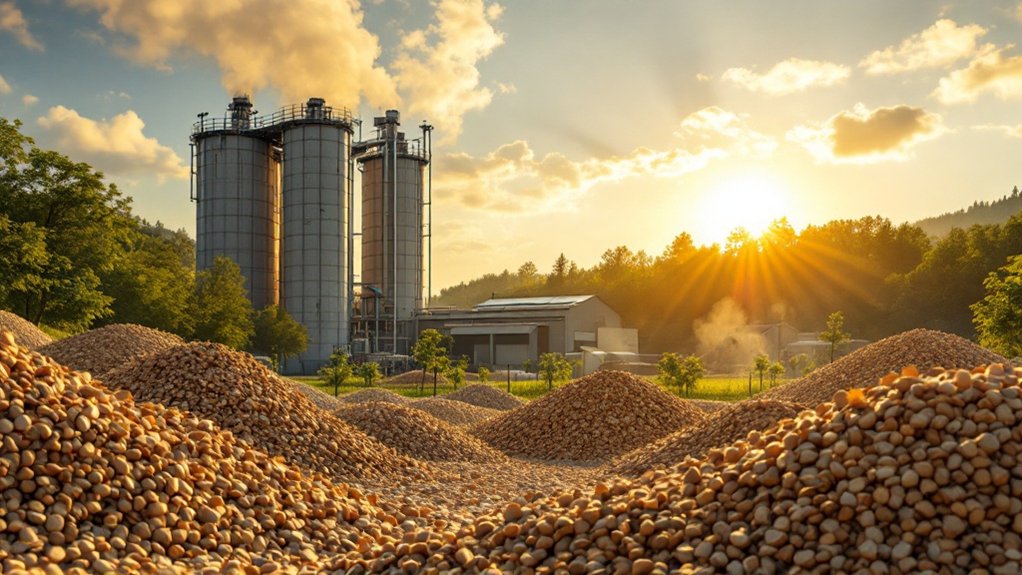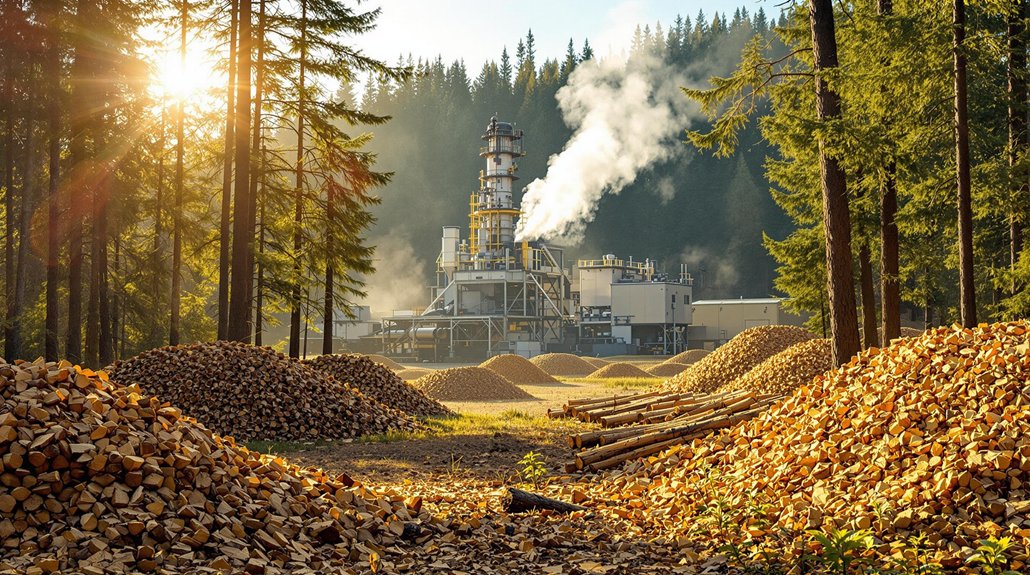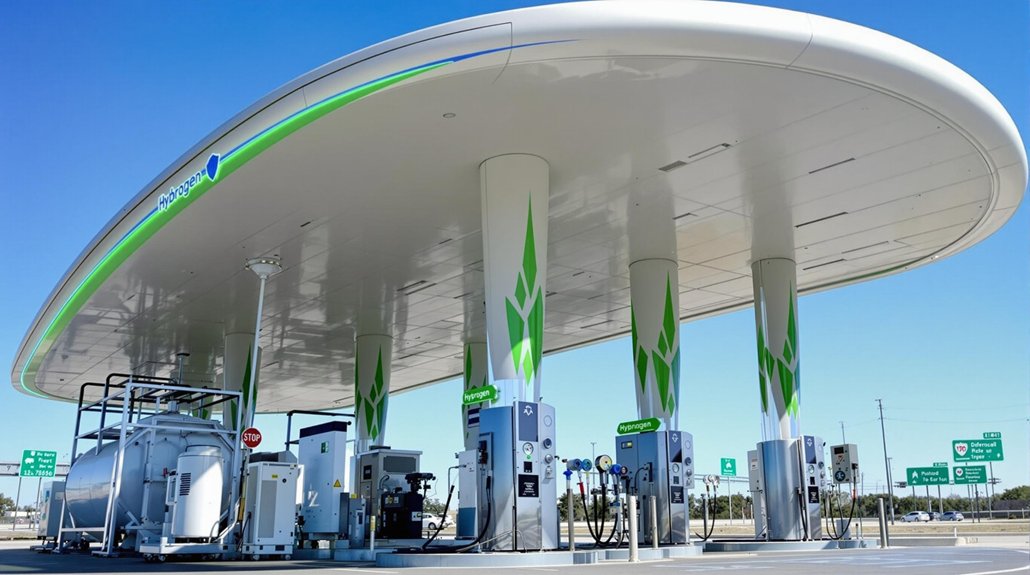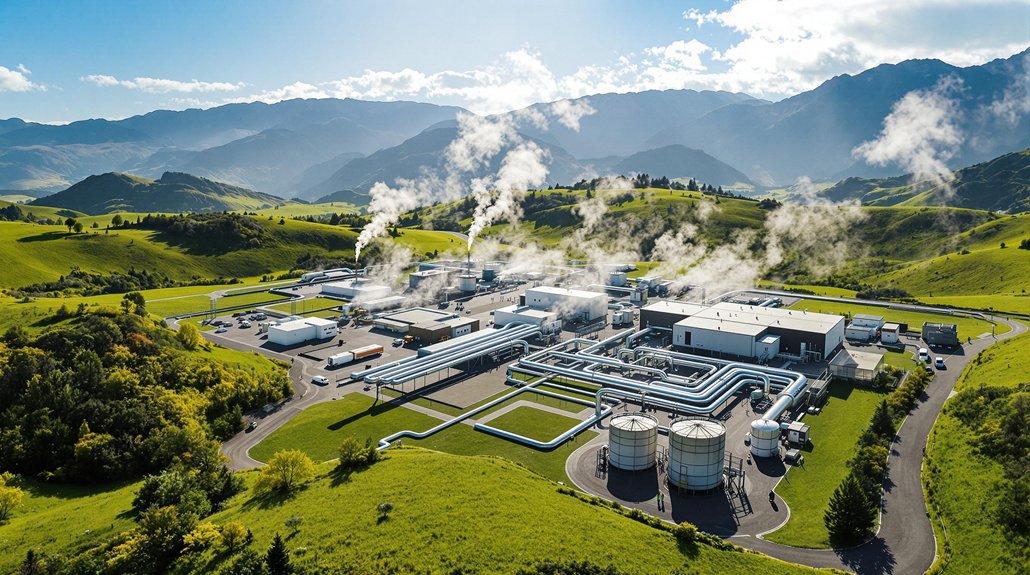Biomass energy comes from organic materials like plants, wood, and waste. It’s renewable because plants grow back and waste is constantly generated. The process works by burning biomass directly or converting it to biofuels through methods like gasification or fermentation. Though it can be carbon-neutral, concerns exist about land use and emissions. Biomass creates rural jobs and reduces fossil fuel dependence. The full picture reveals both benefits and challenges.

Nature’s renewable power source is transforming how we meet our energy needs. Biomass energy comes from organic matter like plants and animals. It’s a renewable alternative to fossil fuels that captures the sun’s energy through photosynthesis. Common sources include wood, crops, waste, and algae, which can be used in solid, liquid, or gaseous forms.
Converting biomass into usable energy happens in several ways. Direct combustion burns the material to produce heat and electricity. Gasification creates syngas, while pyrolysis produces bio-oil and biochar. Anaerobic digestion generates biogas, and fermentation creates liquid biofuels like ethanol. Each method serves different energy needs.
When managed properly, biomass energy can be carbon-neutral. Plants absorb carbon dioxide as they grow, which is released when the biomass is used for energy. This creates a balanced carbon cycle, unlike fossil fuels which only release carbon. However, biomass isn’t perfect. It can lead to deforestation if not regulated and sometimes competes with food crops for land. Despite industry claims of clean energy, burning biomass actually releases more climate-warming pollution than coal when trees are used as the primary source.
Biomass energy serves many purposes in our daily lives. It generates electricity in power plants, heats buildings, fuels vehicles, and powers combined heat and power systems. It’s also used to create biochemicals and bioplastics, expanding its value beyond just energy production. The versatile applications of biomass make it a promising solution for a cleaner and more sustainable future.
The economics of biomass energy show promising benefits. It creates jobs in rural and agricultural areas while reducing dependence on oil imports. Though initial costs for infrastructure are high, government incentives often help make it competitive. In the UK, the government offers up to £5,000 through the Boiler Upgrade Scheme to support biomass boiler installations.
Scientists continue improving biomass technology. They’re developing advanced biofuels from non-food crops and integrating biomass with other renewable energy systems. Smart grid technologies are improving distribution efficiency.
Challenges remain for biomass energy. Concerns about land and water use persist. Feedstock quality varies, and storage can be difficult. Despite these limitations, biomass energy continues to grow as an important part of our renewable energy future.
Frequently Asked Questions
How Does Biomass Energy Compare to Solar in Cost Efficiency?
Biomass energy costs more than solar power in the long run.
While biomass plants cost $3,000-$4,000 per kW to build, solar costs about $1,327 per kW.
Biomass produces electricity at $0.08-$0.15 per kWh, while large solar projects generate power at just $0.031-$0.057 per kWh.
Biomass requires ongoing fuel expenses, but it provides reliable power without needing batteries like solar does.
Can Biomass Energy Production Cause Deforestation?
Biomass energy production can cause deforestation.
Evidence shows the biomass industry’s demand for wood pellets has grown markedly, with a four-fold increase from 2010 to 2015.
While companies claim sustainable practices, critics point to both direct forest clearing and indirect land use changes.
Logging for biomass reduces forest carbon stocks, as older trees store more carbon than newly planted ones.
The impact extends to biodiversity loss and indigenous communities’ rights.
What Are the Job Creation Benefits of Biomass Energy?
Biomass energy creates thousands of jobs worldwide.
In 2021/2022, the sector employed 779,000 people globally. The European Union led with 354,000 jobs.
In the U.S., biomass jobs grew 1.1% in 2023, twice the rate of the overall energy sector. These jobs include scientists, engineers, agricultural workers, and plant operators.
Rural communities benefit most, with higher-than-average wages and new markets for farming and forestry products.
Is Biomass Carbon Neutral Over Its Entire Lifecycle?
Biomass isn’t fully carbon neutral over its entire lifecycle.
While plants absorb CO2 during growth, the complete process includes emissions from harvesting, transportation, and processing.
Time lags between carbon release and reabsorption create temporary warming.
Land use changes can also disrupt the carbon balance.
Different biomass sources have varying carbon footprints.
Scientists now use thorough lifecycle assessments rather than assuming simple carbon neutrality.
How Do Household Biomass Systems Differ From Industrial Applications?
Household biomass systems are smaller, typically 10-50 kW, using pellets or logs for heating and hot water with manual loading.
They’re 60-85% efficient with simple controls.
Industrial systems are much larger (1-50 MW), utilizing wood chips and various waste materials for electricity and heat generation.
They feature automated fuel handling, sophisticated controls, and can achieve 80-90% efficiency with advanced emissions technology and specialized maintenance staff.









